A tribute to Madrid’s oldest stores
You may have noticed little brass plaques in front of shops in Madrid. Designed by the cartoonist Mingote, they indicate that the store in front of you has been in business for more than 100 years. An incredible feat considering that these shops have stayed the course through a civil war and a pandemic. While the latter recently wiped out institutions like Papelería Salazar and the bookstore Nicolás Moya, many others remain. This post is a tribute to the fantastic artisanal stores that have stayed the course.
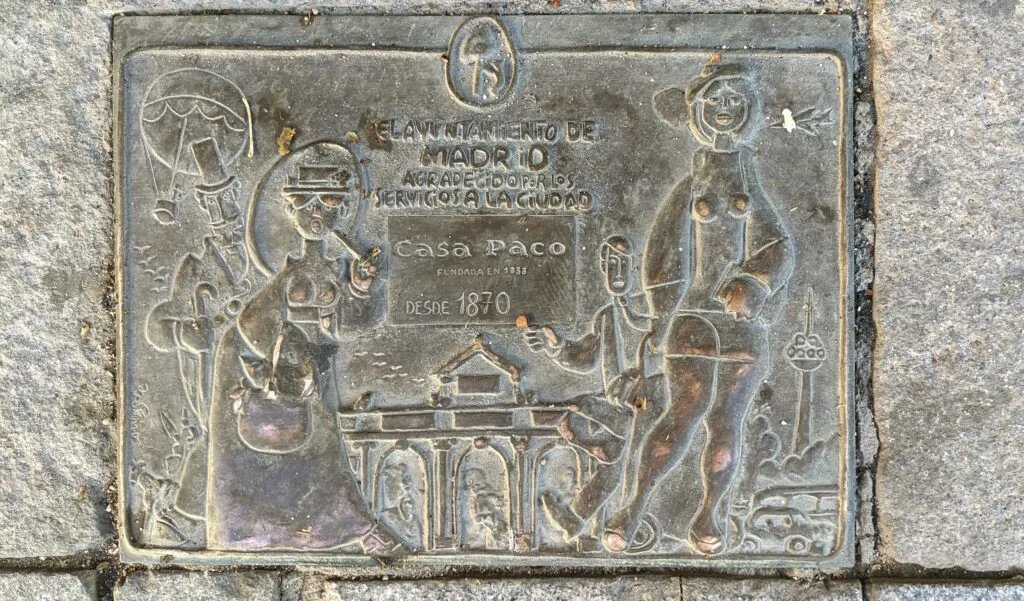
Antigua Pastelería del Pozo
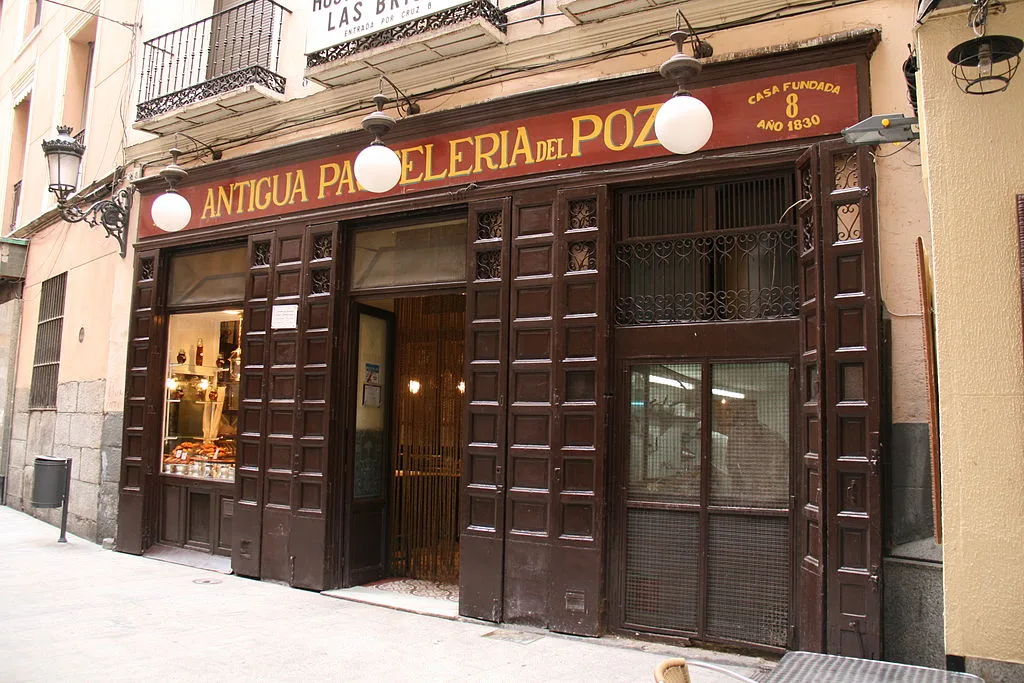
Tucked away down a back street close to Sol, Madrid’s oldest patisserie was founded in 1830 and has been run by the same family since 1900. Here traditional pastries are served in a shop that retains some of its original features including an antique cash register, marble counter and scales. Pozo means well, a reference to the ancient well which is said to have been granted miraculous qualities after a few relics were chucked down it. Now Antigua Pastelería del Pozo is particularly famed for its roscón de reyes, a cream-filled sweetbread similar to brioche enjoyed over Christmas when queues can snake around the block. – Calle del Pozo, 8
Antigua Casa Talavera
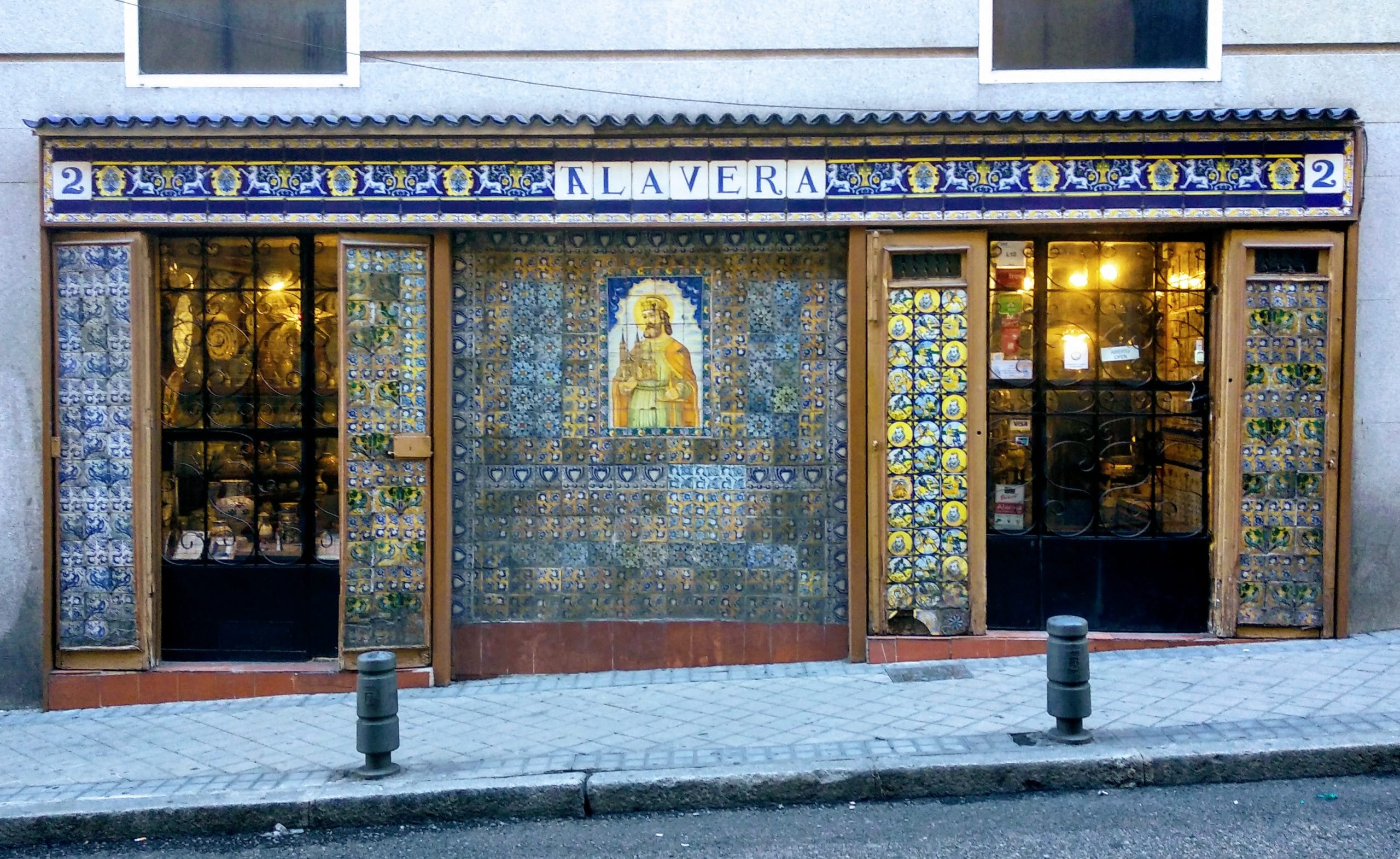
Tucked away on Calle Isabel la Católica, Antigua Casa Talavera is a hidden gem for fans of ceramics. Inside you’ll find a plethora of hand-painted artisanal objects: bowls, plates, tiles, and even amphora (jars used since ancient times to hold olive oil or wine). Opened in 1904, the place is run by fourth generation owner José Senespleda, who is a delight to talk to: extremely well informed about the history of ceramics, he’s more than happy to converse in either English or Spanish about the items on sale.
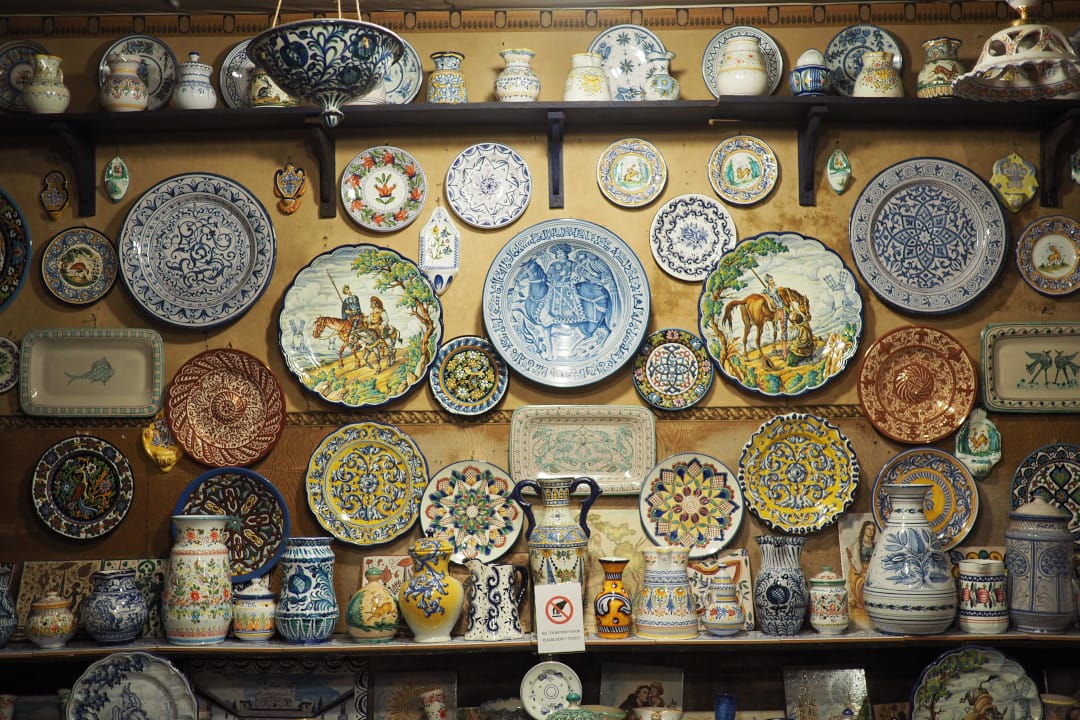
As suggested by the store’s name, they carry ceramics from the nearby city of Talavera de la Reina, the town that spawned Madrid’s spectacular ceramic renaissance in the early 20th century. But there is also work from Alcora, Sevilla, Onda, Andujar, Ribesalbes, and la Bisbal. Everything is hand painted by artisans, even down to the floor tiles and the wonderful shop frontage, which depicts Saint Leopold and scenes from Don Quixote. While the items on sale are not cheap, nothing is mass produced. – Calle de Isabel ‘La Católica’, 2
Casa Mira
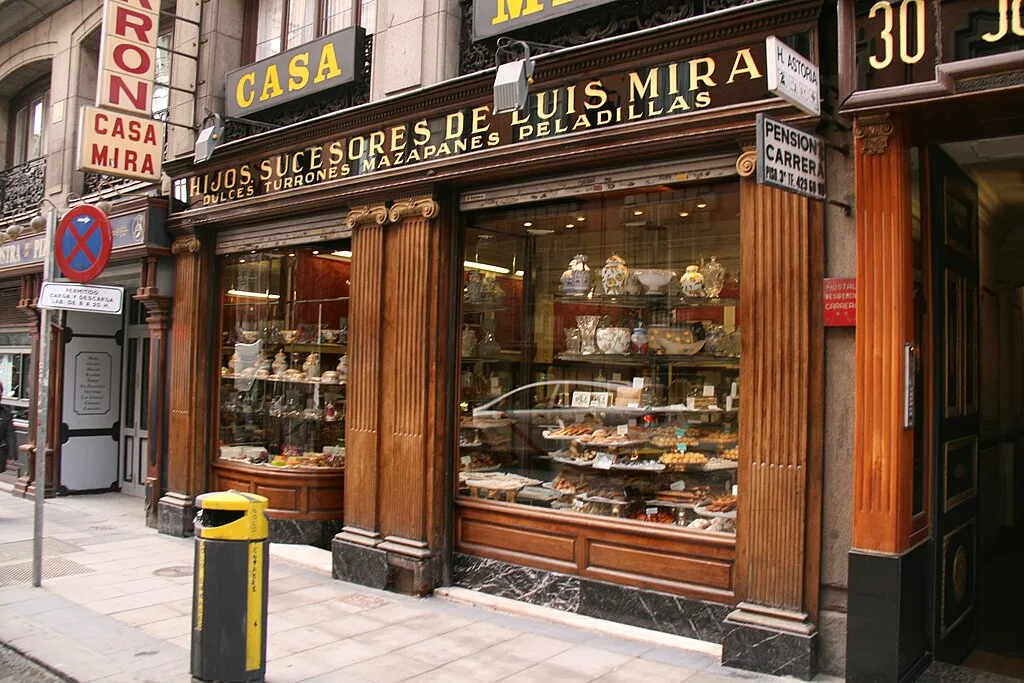
With its beautiful iron columns and glass cabinets, the interior of Casa Mira is almost completely original dating from its establishment in 1842. Even more incredibly, the business is still owned by the Mira family tracing its ancestry all the way back to Luis Mira. Originally from Alicante, Mira decided to try his luck at starting a turrón business in the capital. While other sweet treats are available, turrón is still a bestseller. While elsewhere this Christmas treat now contains all manner of inventive ingredients, Mira specializes in the traditional version: a simple nougat made from honey nuts and egg whites. – Carrera de S. Jerónimo, 30
Casa de Diego
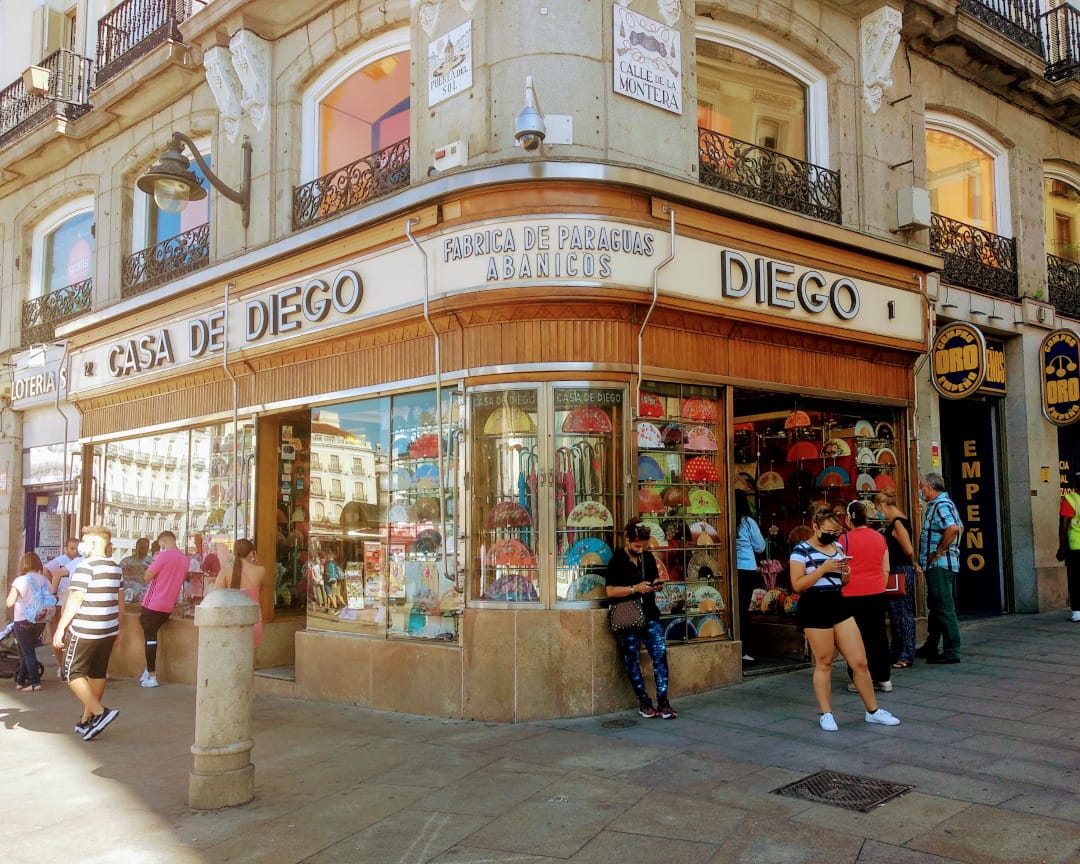
“Wrapping this shawl around one’s shoulders is like dressing up in a painting,” wrote the great Madrileño novelist, Benito Pérez Galdós. He was referring to the Manila shawl, a garment that has become emblematic of Spain. Initially put together in Manila, but marrying Chinese silk with Moorish fringing and Spanish-style embroidery, they are a reflection of the disparate cultural influences that have flowed through the country for centuries.
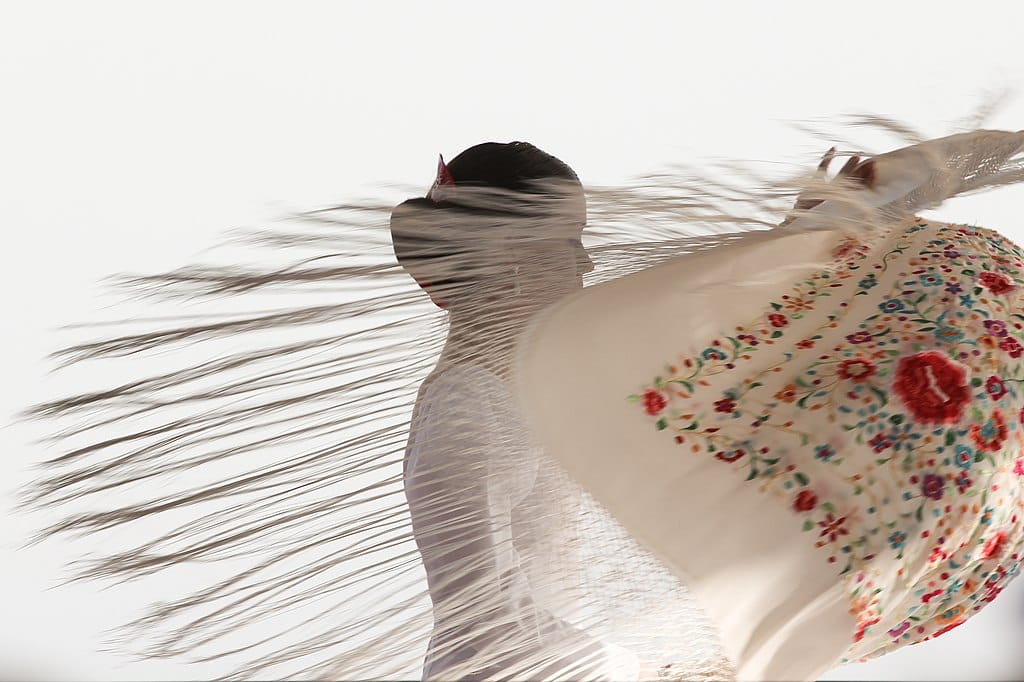
In Galdós’ novel, set during the late 19th century, the shawls are beginning to go out of fashion, but when Casa de Diego was opened in 1823, they were still a hot item and since then have never completely gone out of style. Along with Manila shawls, you can also buy handcrafted fans, peinetas (ornamental combs), and castanets. Located in Puerta del Sol, the shop still retains its old-world charm with original wooden shelving and grumpy service to match! – Puerta del Sol, 12
Seseña
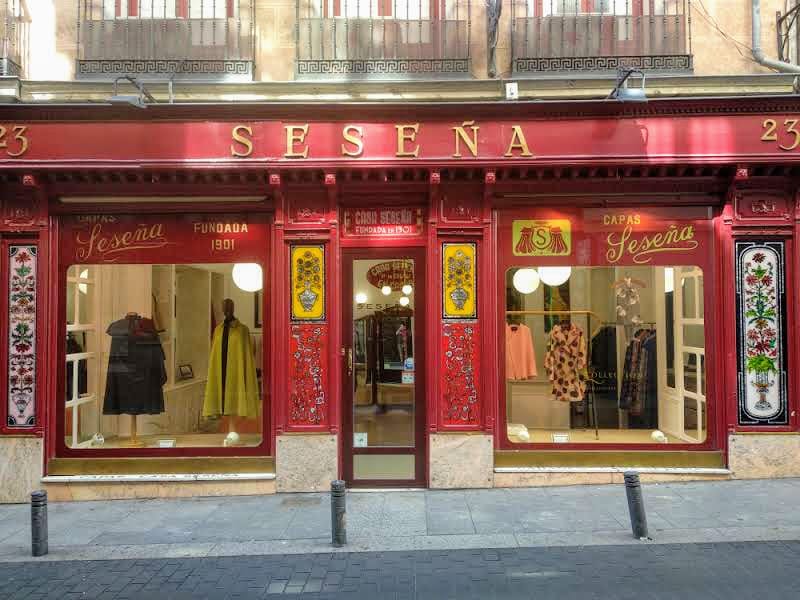
In Spanish, both cape and cloak can be referred to as capa. Back in Medieval times, however, there was a big distinction between two styles: the short capa was a status symbol reserved for royalty and the upper classes, while the long capa, or cloak was for the common man. Obviously, capes were ornate affairs made from the finest materials, while common cloaks tended to be made from rough but warm material. Not only were they handy to use as a blanket if you wanted to take an impromptu snooze, they could also function as a screen when having a cheeky wee in the street or be used for hiding weapons beneath. At one point so many ruffians were running around Madrid concealing weapons beneath their capes and subsequently mugging the city’s citizens that King Charles III decided to outlaw them, an act that led to a riot that almost toppled the monarchy. While the king later managed to trick the public into wearing shorter cloaks by making the long cape the uniform of the executioner, capes didn’t go out of style until the late 19th century, and even then, were still worn by the odd eccentric.
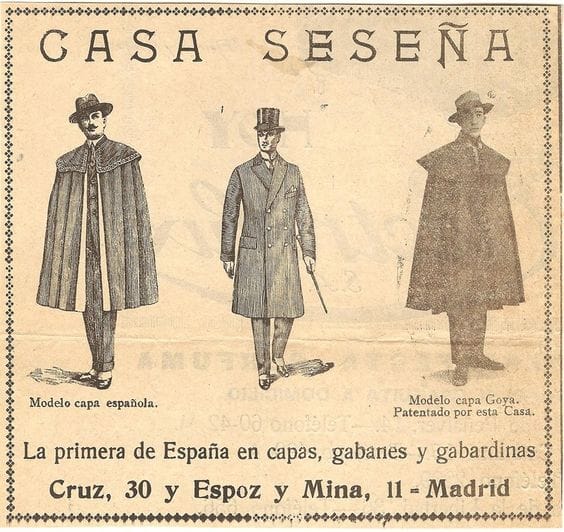
In business since 1901, the capes and cloaks on sale at Seseña have been worn by luminaries including Pablo Picasso, Nicolas Cage, and Hilary Clinton. While they do stock more traditional models, they have kept up with the times and now carry some very fashionable items indeed. – Calle de la Cruz, 23
Casa Yustas
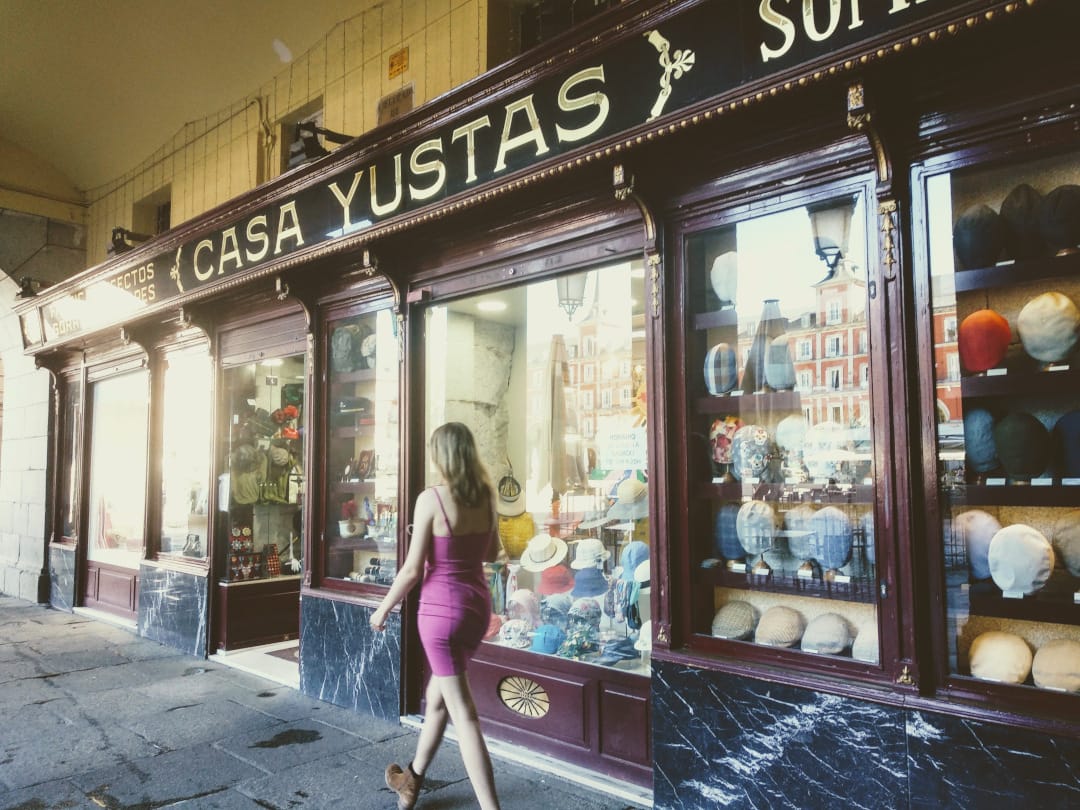
One of the oldest of Madrid’s oldest stores, this wonderful emporium was founded by the splendidly named Leopoldo Yustas Ayuso. Opened in 1886, Casa Yustas is a remnant from the time when guilds flourished in Madrid and haberdashers were all huddled together in and around Pontejos (while haberdashers are still open around the area, many closed their doors even before the pandemic hit).
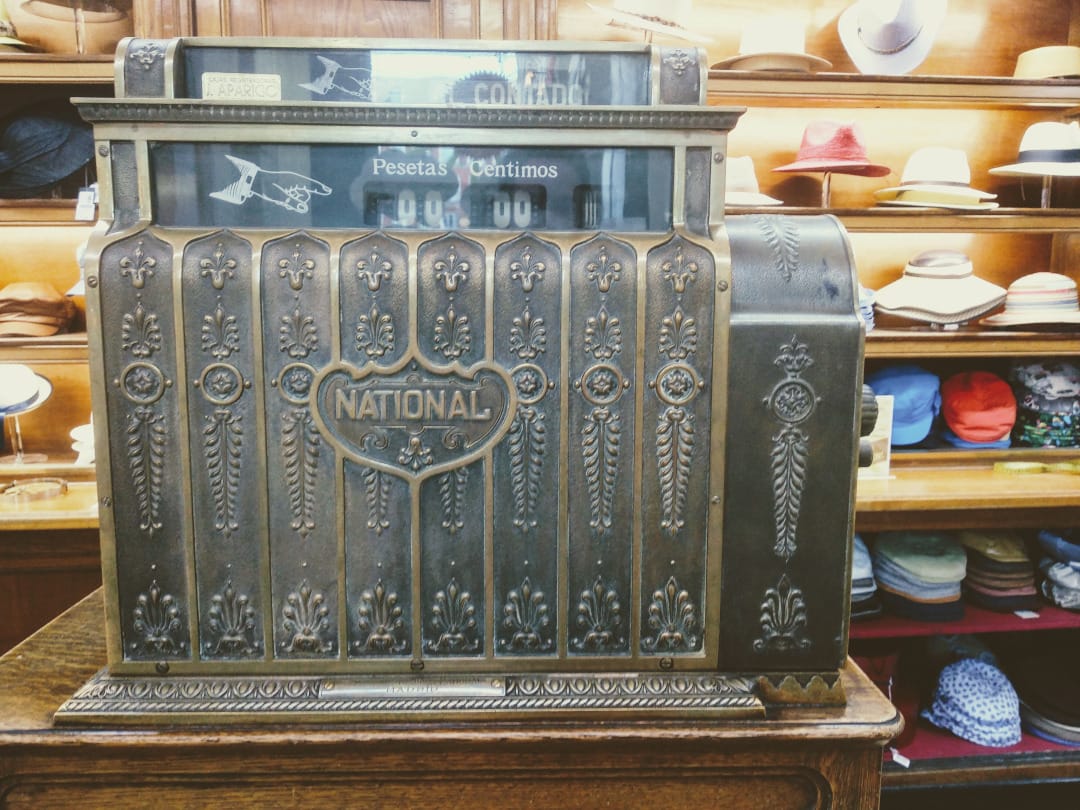
Because it’s located in the Plaza Mayor, it’s retained its original chestnut interior thanks to having been declared, along with the square itself, an Artistic Historic Monument. Here you can buy all manner of fancy headgear for both the ladies and the stylish gent. From fedoras to Panama hats, to berets, to turbans, the enormous collection is spread over three floors. – Plaza Mayor, 30
Antigua Casa Crespo
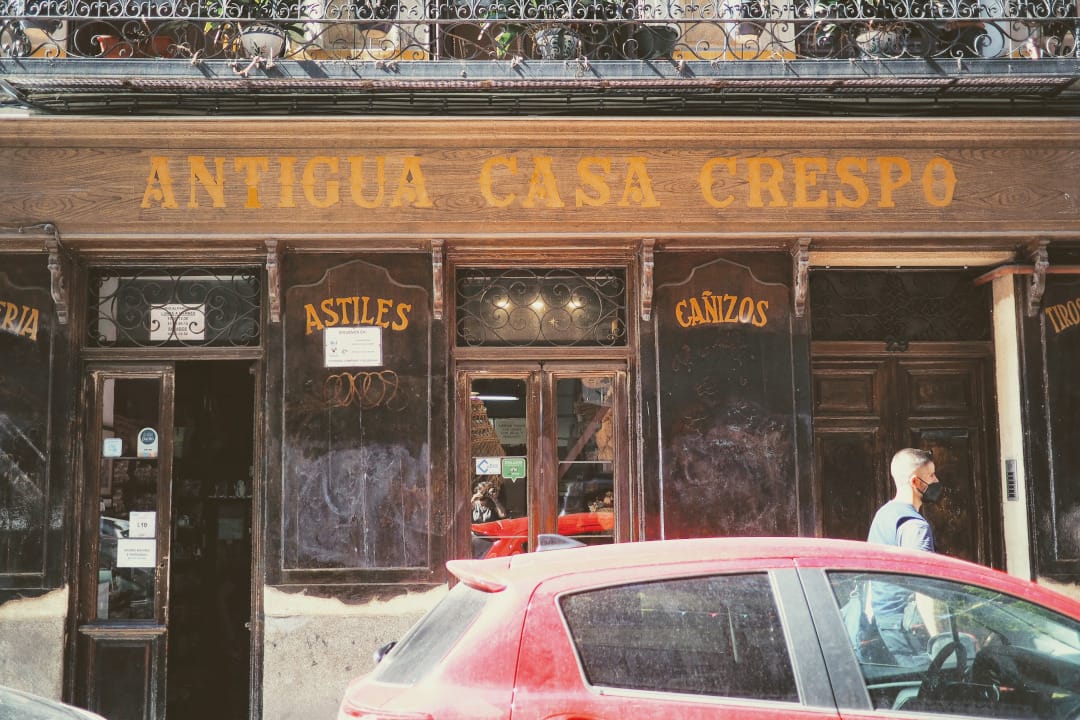
Espadrilles (alpargatas in Spanish) made the leap from Spanish peasant footwear to high fashion in 1948 when Lauren Bacall stepped onto the silver screen in an ankle-laced pair in the film Key Largo. They again flounced into the spotlight in the 1970s when Yves Saint Laurent teamed up with a Spanish espadrille manufacturer to create the now timeless wedge espadrille. Both these styles and more can be bought at Casa Crespo, which, over the years, has sold footwear to a number of high-profile patrons, including Queen Sofia of Spain.
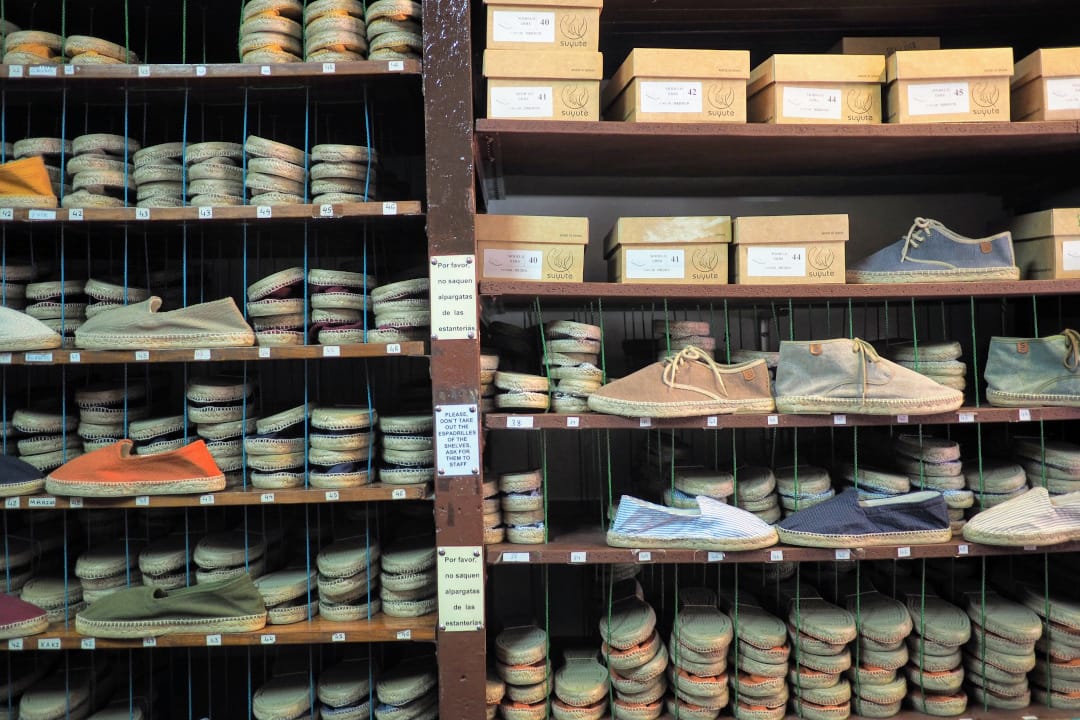
If you’re going to buy a pair yourself, this is the very best place to get them in Madrid. Handed down through five generations, this Malasaña institution has been in business since 1863. It’s one of a very few establishments that still sells espadrilles made from Spanish esparto rope, rather than from jute produced in Bangladesh. Not only that, but all shoes are handmade at their factory in La Rioja, hardly credible when you look at the extremely reasonable prices! – Calle del Divino Pastor, 29
And there you have it, my personal pick of Madrid’s oldest stores. But these are not the only centennial establishments in the city. Which ones are your favourites?
If you enjoyed this post and would like to find out more about the history of Madrid, why not book yourself in for a unique walking tour of the city?
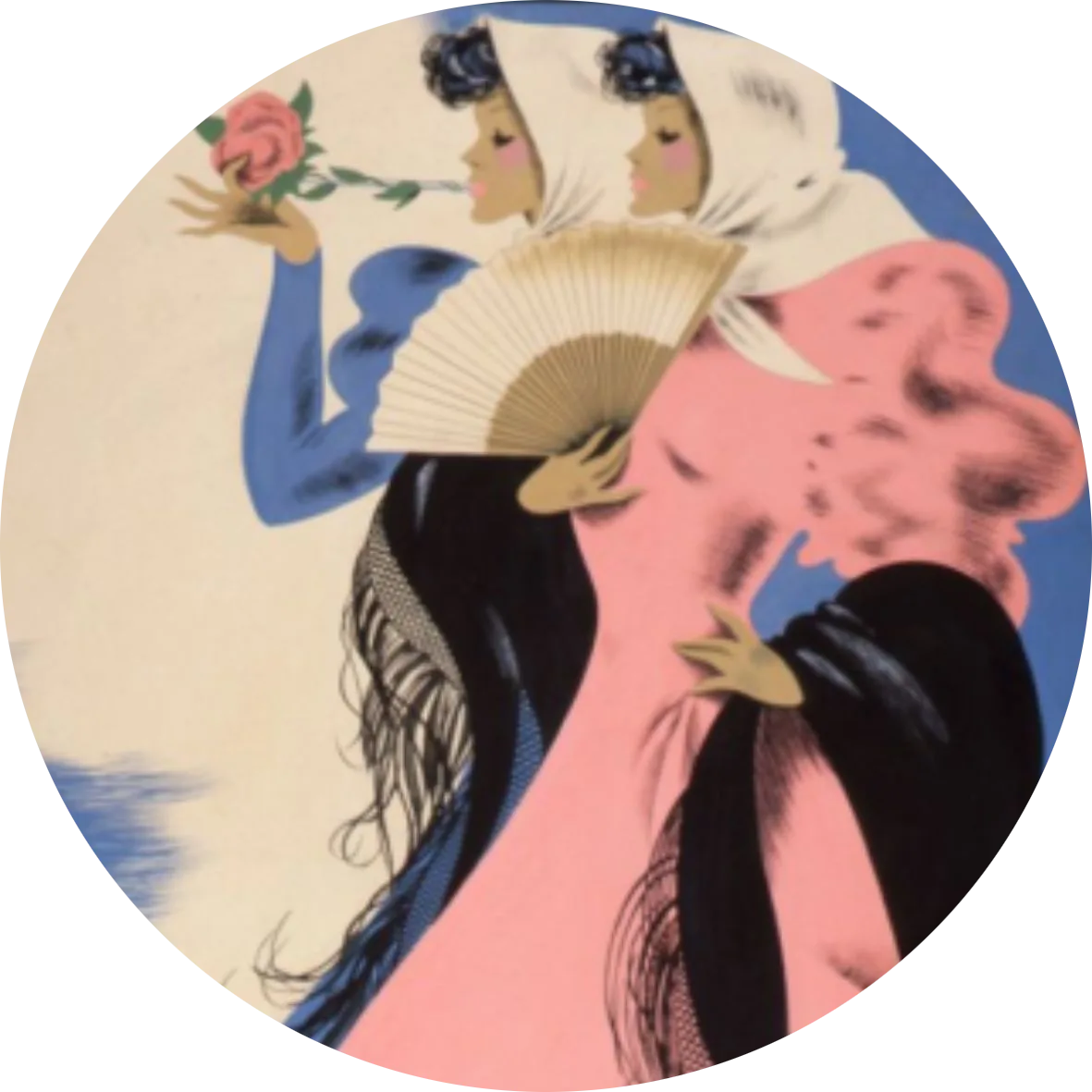
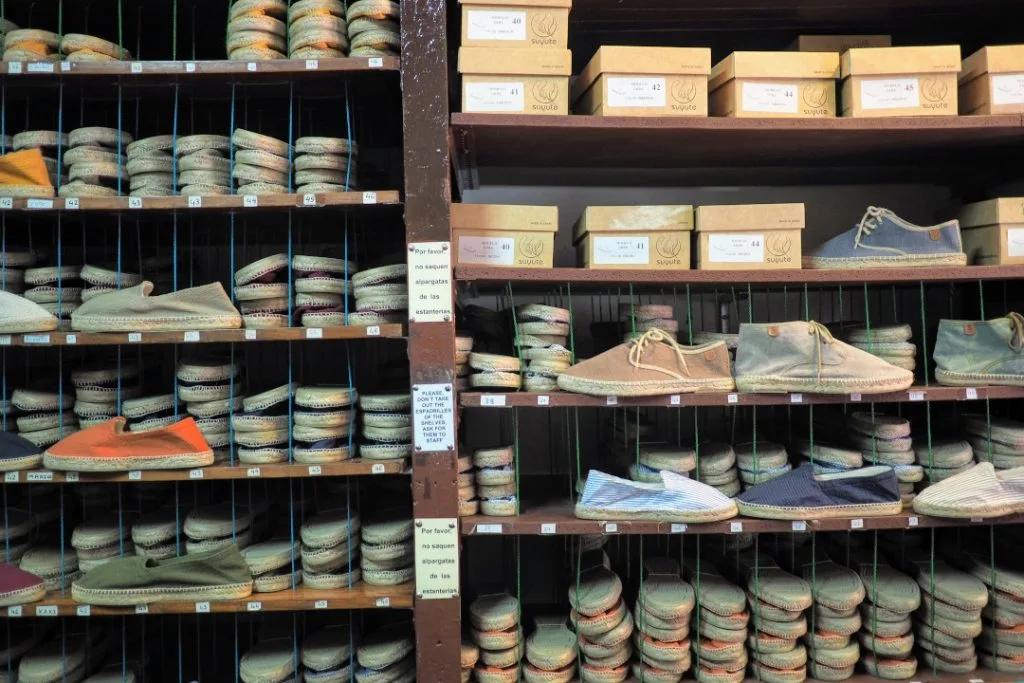
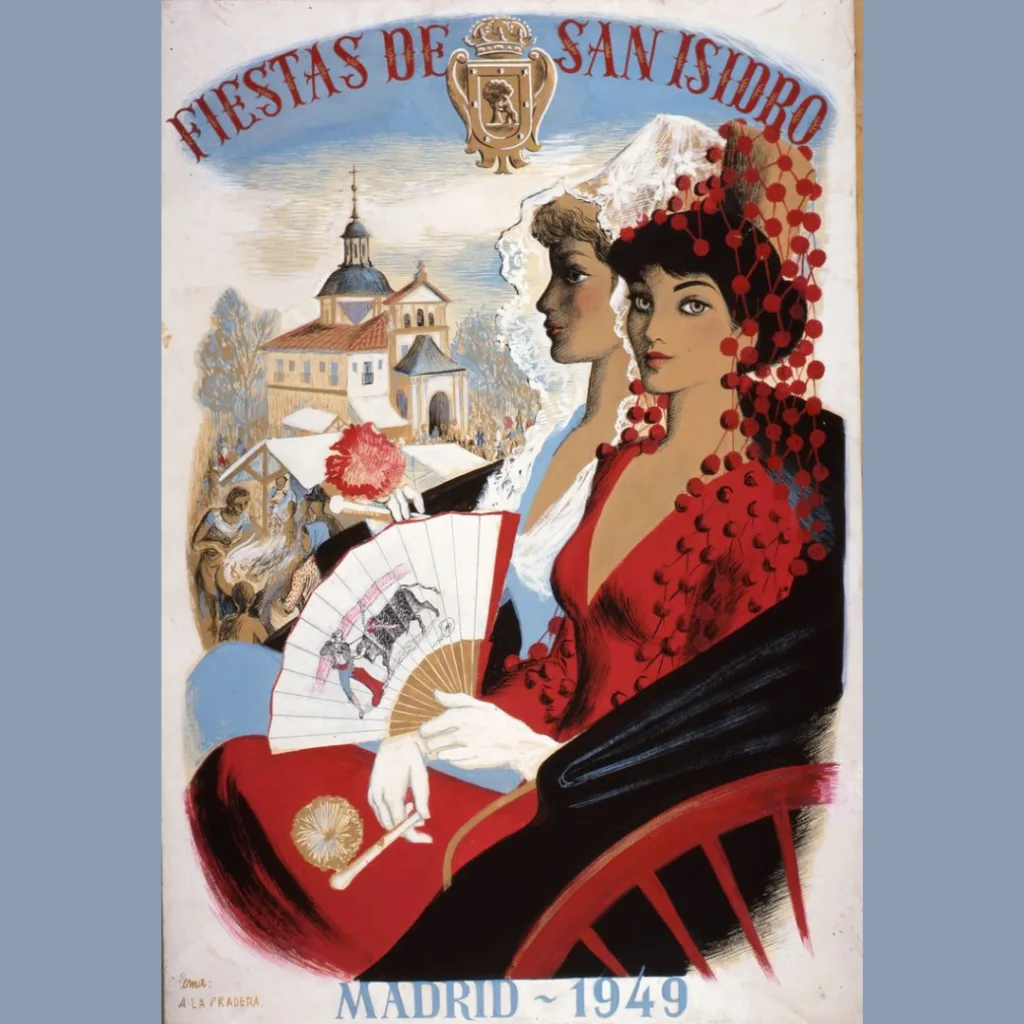
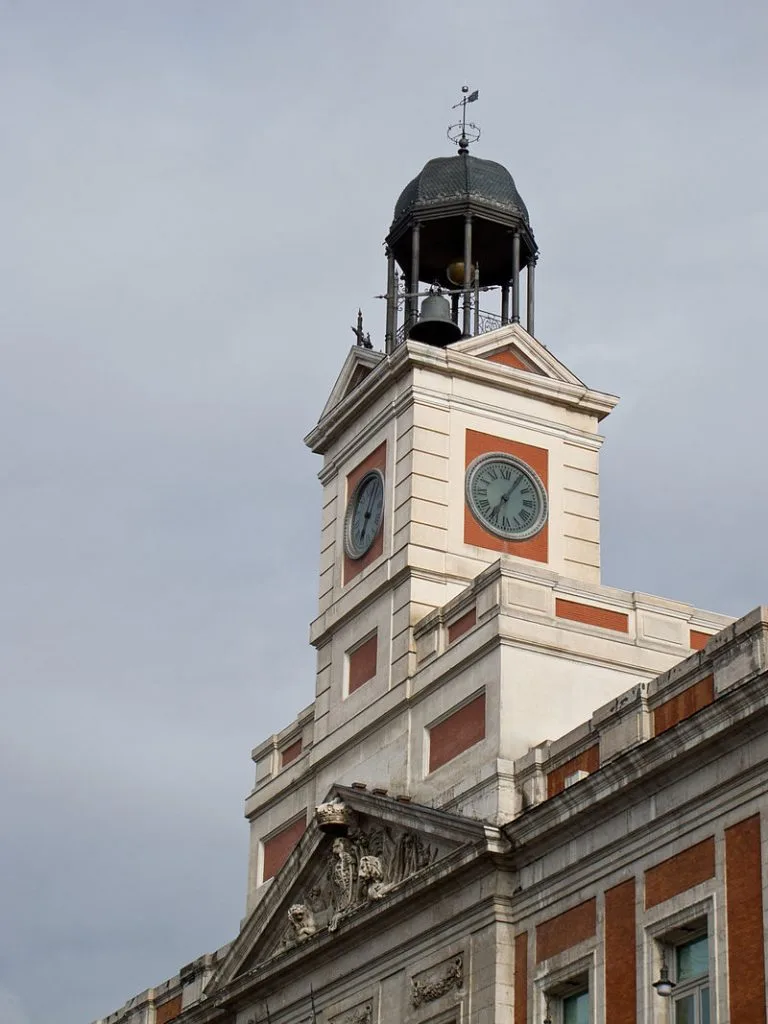
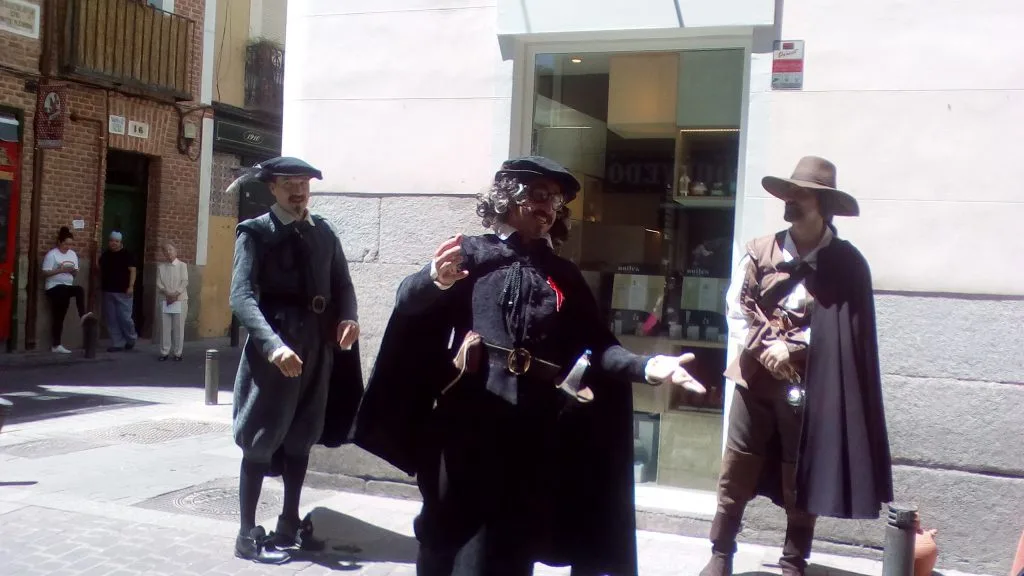
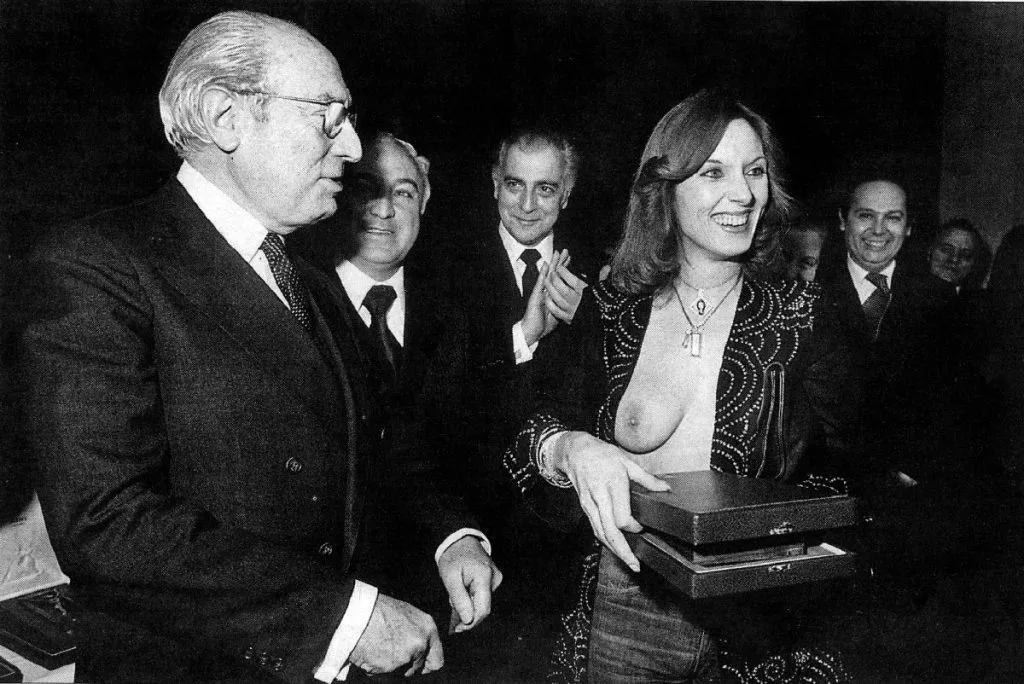
Great article! I might just buy a Derby hat and cape! One thing to correct: the Casa Crespo website linked to is a restaurant in Oaxaca.
Eep, thanks for the heads up. Just fixed it!
Pingback: Ten Truly Madrileño Terms - The Making of Madrid
Hello! I am Sukhmani from Travel Secrets Magazine
I stumbled upon this page while searching for articles on Madrid.
We are promoting Madrid’s cafes, restaurants, museums, markets and more as a part of a consignment offered to us.
Our intention is to feature some photographs and articles on our Instagram page and website with credits given to you. You can attach the media with the reply email if you are interested.
An official confirmation and original content from your side are what we require to move forward with this promotional activity. If you are not interested, please reply soon, so we can make other arrangements. But, I sincerely hope for a positive response.
Do pay a visit to our website and social media handles to know more about us.
Website: travelsecretsmag.com/
Instagram: https://www.instagram.com/travelsecretsmagazine/
Twitter: https://twitter.com/travelsecretsin
Thank you!
Sukhmani
Travel Secrets Magazine